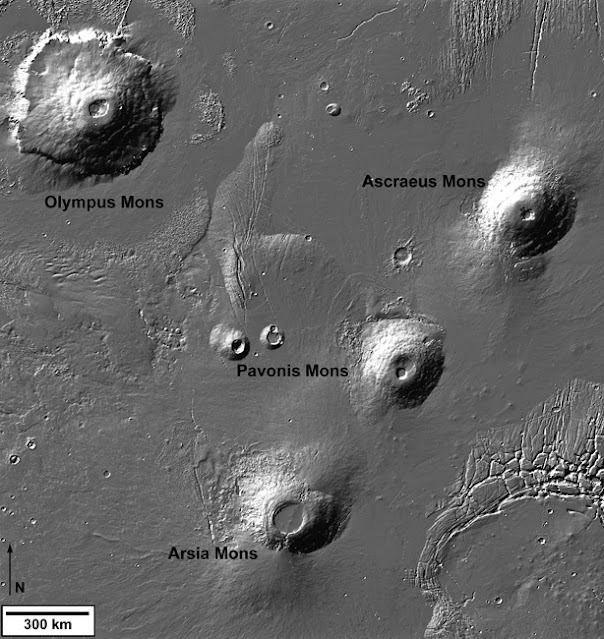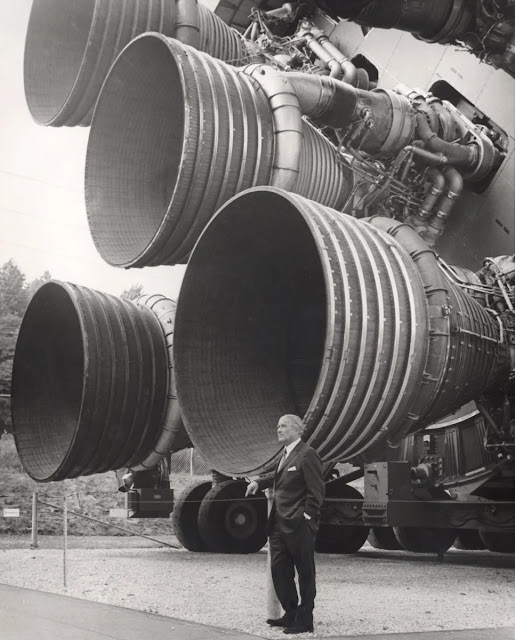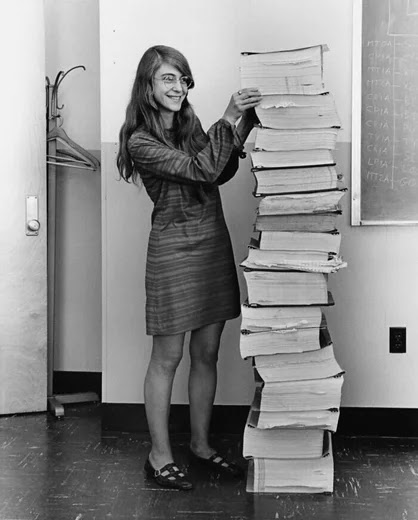Industrial Colonization of the Moon.
May 7, 2021
Preamble
Here the seventeen (17.5) article of a series of articles by Ph.D. Morozov Sergey Lvovich, expert in chronology and calendar systems, as well as space biology and medicine, Parliamentarian of Asgardia (AMP) the first space Nation.
Ph.D. Morozov Sergey Lvovich
Brief Background to Selenopolitics (Industrial Colonization of the Moon)
In 10 years, - in 2030, - the first stationary homeostatic arks with centrifuges on a magnetic levitation "Maglev" will most likely become the basis of the first long-term living station on the Moon.
Stationary GCs will be fully commensurate with mobile GCs in outer space, they will complement each other. Options for their protection from radiation are also undergoing their historical evolution. Stationary GCs will serve as drivers and multipliers of the total international industrialization of space [TMIK], will become points of growth for the world economy and national economy.
On stationary GCs, in particular those built on the Moon, huge mobile GCs will be produced - planets and starships, which will provide civilization with progressive development in time and space within the framework of the Sixth OEF (socio-economic formation). This will make it possible to completely get rid of unemployment. The entire population will need to be prepared from birth for the rules of future permanent life in outer space.
"Moonlight Speech" by President John F. Kennedy. Houston, TX, September 12, 1962
Wernher von Braun was the man who gave the idea to US President J. Kennedy for the first American flight to the moon.
Since 1960, von Braun has been a member of the United States National Aeronautics and Space Administration (NASA) and director of the NASA Space Flight Center. Head of development of Saturn series launch vehicles and Apollo series spacecraft.
The flight of Yuri Gagarin pushed John F. Kennedy to a keynote speech in which he stated that for the prestige of the nation it was necessary to ensure the landing of an American astronaut on the moon before 1970.

"Moonlight Speech" by President John F. Kennedy. Houston, TX, September 12, 1962
“Space exploration is just beginning, but many new companies are already working in this area, which means tens of thousands of new jobs have appeared. Space exploration is, among other things, new investments and the demand for skilled labor.
Our era is unique. Most of the world's scientists live and create right now. The number of scientific workers in America is growing three times faster than the general population of the United States, doubling every 12 years. Despite all this and the inexhaustible scientific potential of America, a huge number of questions remain unanswered, although thousands of great minds are beating over them.
The history of our country consists of victories: America was among the flagships of the industrial revolution, leaders in the field of inventions and innovations, we were the first to put nuclear energy in the service of man. And today our duty is to get ahead in the exploration of the Universe.
We accept this challenge, we participate in this race - and we will emerge victorious. All eyes are now directed to space, to the Moon, to the planets around us. And we want the flag of the United States to fly there, a symbol of freedom and peace ...
Thus, both Houston and Texas will receive a powerful impetus for further development. The historic outpost of American civilization will become a link between the Earth and the Universe. The Manned Space Flight Center will transform Houston into a hub for the scientific and engineering community.
Over the next five years, the National Aeronautics and Space Administration plans to double the number of scientists and engineers employed in this area, increase costs to $ 60 million a year, invest about $ 200 million in industrial and laboratory equipment, and spend more $ 1 billion for new space programs that will be directly linked to this Mission Center.
As you can see, significant financial costs will be required from us. The budget for the space research program has tripled this year compared to last and exceeds all expenditures in this area over the past eight years.
Space exploration will cost us $ 5400 million a year. This is a fantastic amount. However, we spend more on cigarettes and cigars. In the near future, we will see an additional increase in the cost of this program, from 40 to more than 50 cents for each citizen of the United States.
We are aware of the scale of the costs and are ready to take this step, which is dictated solely by our faith and our outlook on the future, because so far the prospects for space exploration are unclear.
But, my dear fellow citizens, just imagine that we will send to the moon, located 240 thousand miles from the control center in Houston, a rocket about three hundred feet long (like this field!) With a body made of unique metal alloys, some of which have not yet exists in nature, capable of withstanding incredible temperatures and loads, working more accurately than all clocks in the world, and carrying the equipment necessary for flight control, research, communications, power and life of astronauts.
This rocket will make an incredible journey, reach a planet that has never been stepped by a human foot, and then return safe and sound to Earth, enter the atmosphere at a speed of more than 25,000 miles per hour, warming to temperatures only half that of the Sun...
If our plan works, we will emerge as absolute winners. Agree, it's worth it!
Werner von Braun was appointed by US President John F. Kennedy to lead the entire US lunar program.

Von Braun and President John F. Kennedy. May 19, 1963
Space industrialization of the XXI century. USA - first on the moon. Apollo program
Structurally, the command compartment is made in the form of two shells. Inner shell made of aluminum honeycomb profiled panels with a thickness of 20 to 38 mm, welded structure - a pressurized cockpit with a free volume of 6.1 m2;
outer casing of profiled honeycomb panels with a thickness of 15 to 63 mm, welded from sheet stainless steel with a thickness of 0.2 to 1.0 mm.
The outer shell, which forms a thermal barrier that protects the pressurized cabin of the crew, consists of three parts: the front screen, the screen of the pressurized cabin and the rear screen, which are attached to the pressurized cabin with I-beam power elements made of fiberglass, insulating the pressurized cabin from thermal conductivity and temperature stresses. Additional thermal insulation is provided by a layer of fiberglass between the shells.
Thus, the Apollo command compartment had an excellent protective composition of steel and aluminum with a total thickness of the outer and inner shells up to 10 cm, both from the radiation effects of space and from both radiation belts of the Earth (Van Allen belt).
(Design and characteristics of Saturn V Apollo.http://www.plam.ru/tehnauka/pilotiruemye_polety_na_lunu/p4.php#metkadoc2)

Command (silver cone) and service compartments of Apollo in lunar orbit (1969)
Image above: Lunar landing sites for the Luna (Red, USSR), Surveyor (Yellow, USA) and Apollo (Green, USA) programs.
In the 21st century, the role of the engine of industrial development has shifted from aviation to space rocket technologies and the conquest of outer space by civilization.
Wernher von Braun next to his brainchild - the space carrier Saturn-5
The exodus of mankind into space has become the main target of civilization on Earth in the 21st century. The first and most important stage of this Exodus is the conquest and full development of the Moon by mankind as a kind of key springboard into the Universe.
Rocektdyne F-1 engine from the first stage of Saturn-5
In 1969-72, 12 people visited the moon. They landed on our satellite six times during missions:
Apollo 11, July 1969
Apollo 12, November 1969
Apollo 14, February 1971
Apollo 15, July-August 1971
Apollo 16, April 1972
Apollo 17, December 1972
Image above: They were on the Moon: Neil Armstrong, Buzz Aldrin , Michael Collins - Apollo 11; Pete Conrad, Richard Gordon, Alan Bean - Apollo 12; Alan Shepard, Stuart Roosa, Edgar Mitchel - Apollo 14; David Scott, Alfred Worden, James Irwin - Apollo 15; Thomas Mattingly, John Young, Charles Duke, Jr. - Apollo 16; Harrison Schmitt, Eugene Cernan, Ronald Evans - Apollo 17. Note: the names do not necessarily follow the order of the photos. And if the Apollo 13 crew is not mentioned, it is because they did not go on the Moon (mission failure).
Apollo 11 team. Left to right: Neil Armstrong, Michael Collins, Buzz Aldrin. First on the moon. (1969)
Image above: Neil Armstrong (right next to President Obama) and fellow flight colleagues Michael Collins (center) and Buzz Aldrin (left) at a reception in the White House Oval Office on the 40th anniversary of the flight to the moon (2009).
"Apollo 11" (English Apollo 11) - American manned spacecraft of the Apollo series, during the flight of which on July 16-24, 1969, the inhabitants of the Earth for the first time in history landed on the surface of another celestial body - the Moon.
(January 28, 2017 at 15:30 "Americans were on the moon: criticism of lunar conspiracy theories." https://habr.com/ru/post/401135/)

Image above: USA flag on the moon. July 20, 1969 Moon, in the southwestern region of the Sea of Tranquility, Neil Armstrong and Buzz Aldrin planted a lunar module for the first time in history.
The first landing of humans on the moon
On July 20, 1969 at 20:17:39 UTC, Crew Commander Neil Armstrong and pilot Buzz Aldrin landed the spacecraft's lunar module in the southwestern region of the Sea of Tranquility.
Landing area. The first man's exit to the lunar surface
They stayed on the lunar surface for 21 hours 36 minutes and 21 seconds. All this time, command module pilot Michael Collins was waiting for them in circumlunar orbit. Astronauts made one exit to the lunar surface, which lasted 2 hours 31 minutes 40 seconds. The first person to set foot on the moon was Neil Armstrong. This happened on July 21 at 02:56:15 UTC. Aldrin joined him 15 minutes later.
The astronauts planted a US flag at the landing site, placed a set of scientific instruments and collected 21.55 kg of lunar soil samples, which were delivered to Earth.
Post-flight quarantine
After the flight, the crew members and lunar rock samples went through strict quarantine, which did not reveal any lunar microorganisms.

Image above: The trajectory of Apollo 11 return to Earth (blue curve with red dots) through the electron radiation belt as calculated by Robert A. Braeunig.
The successful completion of the Apollo 11 flight program signified the achievement of the national goal set by US President John F. Kennedy in May 1961 - to land on the moon by the end of the decade, and marked the victory of the United States in the lunar race with the USSR.
https://oko-planet.su/phenomen/phenomennews/517958-amerikancy-ne-byli-na-lune-razbor-doz-radiacii-poluchennyh-astronavtami-programmy-appolon-pri-preodolenii-radiacionnogo-poyasa-zemli.html
Image above: Catherine Johnson is a famous mathematician and "human-computer" who completely calculated the famous flights of the missions of the "Mercury" and "Apollo 11" series. It was her research that laid the foundation for the American Space Shuttle program.
Margaret Hamilton handwritten navigation software for the Apollo Project in 1969
Margaret Hamilton and the handwritten navigation software she and her team at MIT created for the Apollo project in 1969.
Coming soon: THREE HISTORICAL STAGES OF COSMONAUTICS DEVELOPMENT. Part 17.6
Related articles:
Exodus of civilization into space - Creation of the first ever mobile homeostatic ark (HA) in the USA. Part 16
https://orbiterchspacenews.blogspot.com/2021/05/exodus-of-civilization-into-space_5.html
Exodus of civilization into space - Apocalypse; View from the UK. Part 15
https://orbiterchspacenews.blogspot.com/2021/05/exodus-of-civilization-into-space_3.html
Exodus of civilization into space - Comparison of plans of NASA and Roscosmos. Part 14
https://orbiterchspacenews.blogspot.com/2021/05/exodus-of-civilization-into-space.html
The ideology of space expansion - The question of pregnancy and childbirth in zero gravity. Part 17.4
https://orbiterchspacenews.blogspot.com/2021/04/the-ideology-of-space-expansion.html
Colonization of the Moon - The source of the power, wealth and power of civilization in the Universe. Part 17.3
https://orbiterchspacenews.blogspot.com/2021/04/colonization-of-moon-source-of-power.html
Space manned industrialization of the XXI century - the golden age of civilization. Part 17.2
https://orbiterchspacenews.blogspot.com/2021/04/space-manned-industrialization-of-xxi.html
Exodus of civilization into space - Humanity's strategy to create stationary and mobile Homeostatic arks. Part 17.1
https://orbiterchspacenews.blogspot.com/2021/04/exodus-of-civilization-into-space_21.html
Exodus of civilization into space - Tsiolkovsky Galactic State. Part 9
https://orbiterchspacenews.blogspot.com/2021/04/exodus-of-civilization-into-space_19.html
Exodus of civilization into space - Symbol of the End of the XXI century. Part 8
https://orbiterchspacenews.blogspot.com/2021/04/exodus-of-civilization-into-space_16.html
Exodus of civilization into space - Stopping the process of increasing value added. Part 7
https://orbiterchspacenews.blogspot.com/2021/04/exodus-of-civilization-into-space_14.html
Exodus of civilization into space - The sixth socio-economic formation of civilization. Part 6
https://orbiterchspacenews.blogspot.com/2021/04/exodus-of-civilization-into-space-sixth.html
Exodus of civilization into space - Space man. Part 5
https://orbiterchspacenews.blogspot.com/2021/04/exodus-of-civilization-into-space-space.html
Exodus of civilization into space - Biological End of the World. Part 4
https://orbiterchspacenews.blogspot.com/2021/04/exodus-of-civilization-into-space_7.html
Exodus of civilization into space - Geochronological Ice Ages, periods, eras. Part 3
https://orbiterchspacenews.blogspot.com/2021/04/exodus-of-civilization-into-space_5.html
Exodus of civilization into space - Astrophysical End of the World. Part 2
https://orbiterchspacenews.blogspot.com/2021/04/exodus-of-civilization-into-space.html
The ideology of space expansion - Space calendar. Part 1
https://orbiterchspacenews.blogspot.com/2021/03/the-ideology-of-space-expansion-space.html
Related links:
About Ph.D. Morozov Sergey Lvovich: https://zen.yandex.ru/media/id/5fbb90753e3ad265054f930a/ob-avtore-kanala-5fbd2bf80b4af80149fb12c2
Original article in Russian on Zen.Yandex:
https://zen.yandex.ru/media/id/5fbb90753e3ad265054f930a/ishod-civilizacii-v-kosmos-chast-17-strategiia-selenopolitiki-ili-sozdaniia-stacionarnyh-i-mobilnyh-gomeostaticheskih-kovchegov-606467c1fa23f523d376a218
Asgardia website: https://asgardia.space/
Author: Ph.D. Morozov Sergey Lvovich / Zen.Yandex. Editor / Translation: Roland Berga.
Best regards, Orbiter.ch























































